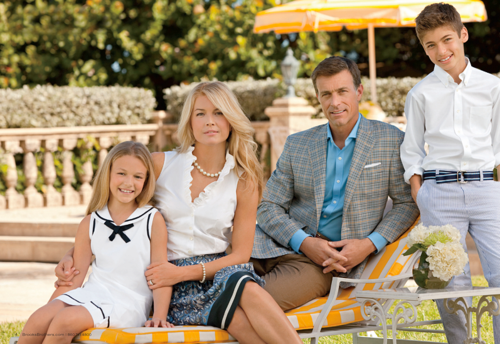Awesome! I like how you used strip anchors (or whatever those are called) so the shelves are adjustable. Adds a design element too.
Yes!
It’s my second large-ish install of this sort- there’s another slightly larger than this in my dining room downstairs, so this is sort of it’s sister.
Couple of advantages (besides adjustability) to those brackets:
- Cheap as chips!
- Customizable- some of these have been cut to length, and I’ve custom painted them (in other projects) too.
- Since I make the shelves, I can change/add those and reconfigure to accommodate. Indeed, there might be a smaller “mini shelf” to be made for the lower right…
- Because you can see the wall behind, it feels “lighter” and less overpowering
- Because it “floats” on the wall, you can vacume right under the bottom
Dreamy.
Managed to finally get this sorted today. Holds some of my small parts cases- it’ll double in size, soon- another of the same size, side by side. On huge casters.
That’s a lot of small parts. Parts of what?
Lego?
No Lego there.
Three cases of electronics, some computer I/o interfaces, sewing supplies, fasteners, and so on. Once the second unit is built, I’ll move all the screws, rivers, nails, and so on over too.
Tiny bike parts are in there too- spare chain links, pedal parts, etc etc etc.
Built a deck over the past few days with the family. Two, actually. And did siding.
Now, for projects I’m doing for fun… I’m writing a bot for a game I play.
Rewrote some dude’s code project, using modern techniques. Slashed his code size by 80%. The same functionality, just with much less code and much more readable. Take that, some dude I used to know!
less code = better code. ![]()
Well, provided you aren’t skipping tests for preconditions, postconditions and invariants… ![]()
(Not that you always need these, but there are times when they’re a godsend.)
This.
Also, readability and maintainability counts.
You can compact that block of calculation and control-flow logic into a single line, but when you (or worse, your successor) needs to change part of the math? Leave that active compacting to the compiler. It’s good at it.
(That’s not to say that the general rule of ‘less code is better’ isn’t a good sew to work by - it’s a fine principle, just that all old saws can also be used to cut off your own foot. ![]() )
)
Which is why I avoid idioms such as <var> = <bool expr> ? <expr1> : <expr2> in situations where the expressions are non-trivial. Clarity is a must…
…except of course, in͡ ̸͎̩͍̩A̸̘̖̥͉̟ͅP͔̝̪̘͚͕L̸͈̮͔̥̥̠ͅ,̙̞ ̞͞b̝̟̙̳̜͎ù̥̟̦̝͙̳t͉͉͔̝̰̲̕ ͚͠t͍̝h̖͉̥̤̠̻a̗͉̻t̷̯̻̺̱̬’s̴̘̯̳ ̡͔̰a̳͞ ͇̘̞̗l̶͚̰a̸͉̩̦̙n̳g̨u̮͔a̯͈͇̥̖͕g̰̬̠͓͖̰e͎̙̝ͅ ̺̱̯̝̹̀f̠͡ó͚͙̺͈͚̭r͕ ͕̬̯̬͚͚͢s̯̟̥̼̥u҉͚̤mm͇̝̙͇̮ͅo̫͎̖ń̯̫͉̘̭i̝͕͖̼n̸̜͈͎̘̠̜g̙̬̭ ̘̱͍̦̲͍͠Gr͔̻̣e̲̟͓̲͚̣a̖̟͈̪̦ͅt ̛̙̘̭Ò̩͇̻̖l̸̪̥d̶̠̗̘ ̵̺̹͓̞̫̠O͝ne̼̟̻̙͚̟͙s͎̼̲̮ ̰̘̱͎̠-̮̟̻͕̕ ̲̲̳̬̕ͅo̪̲͍̥̗͉ḅs̡̠̙͈̠̤c̻ú͖̗ͅr̛͔i̗͡t̳̟̹̪̼͚̥y̧͇͕̖̜̪ í̳̮͉̼s̡̼̪̙ ą̙ ̧_f͈͇̺e̺̲͍̺̭a̱̰̦̠t̺̮̥̯̻̺ur̴e͎̪̣̥_.̡
I thought LISP was the language of old R’lyeh - those who the old ones would rule, they must first drive mad. Ia!
![]()
One has just to look at the two languages: Lisp is the veriest measure of rationality compared to AP̹̱͜L͎͓̼̟̯̰͎ (and so much less dense). It just helps to have a bit of OCD when counting parentheses…
I’ve posted this at the old place already if one browses both websites, just FYI.
Okay, old problem that many of you know already…
Problem: I am trying to work as an artist in the least expensive way I know how, to live and paint in an apartment in Tijuana, Mexico. Selling anywhere, but primarily the United States.
My primary issue: An increasing number of people who ask me to paint for them simply want me to copy images they send me, a task which I find dull and disheartening (especially the crap photos).
I have little issue with subject matter, but I can’t seem to convince clients to just give me a little of their time to gather them together to take a photo of them in a natural grouping so I can have some room to be creative and original in composition and setting. I feel that this is a crucial component for building a repuation, so that people can have a good sense of my (now) developing style and artistic sensibility.
I want to know how some of you feel I could express this and remain steadfast without offending potential clients and losing business?
To be fair, a couple of my last dozen clients understand my struggle to try and elevate my art, but I really wish to figure out how to explain to the average person that copy work is not really helping me advance without offending them.
I’ve considered giving a steep discount as an incentive to let me have my way, but I still need to make enough to survive (which really ain’t much by USA standards).
I give you an example (I have no idea who this family is, but it’s definitely the most whitebread photo I think I’ve ever seen)…
And a pose I caught on my own of the neighbor’s daughter and her friend, from a high vantage point, relaxed and informal…
To be fair, I can’t do anything about the whitebread-edness of the family, but I most likely would have asked them to sit around that patio table in the background as if they were interacting with each other instead of the camera, so I could get an interesting grouping and some play with the shadows.
I used to do a certain amount of portraiture, but I always insisted on a sitting, even if it was me taking photos to work from. My methods in that case were pretty simple: the camera was set up with pretty fair depth of field, I had a cable attached to the shutter button, with the cable’s button hidden in my hand, and I would talk to the subject(s), get a roaring conversation going. When I saw something characteristic of the subject(s) developing, *click*, and the subject(s) had no chance to pose for the camera.
The ticket to selling the sitting, though, is to point out what is in it for them: by visiting them in their normal surroundings and interacting with them, you get to know who they are, and that becomes part of the portrait - you can create something that captures who they are. A posed photo doesn’t always do that.
Put it in those terms: “I can create something that looks like you, or I can create something that is you.”
Your development as an artist is your business, not theirs. What they are looking for is a picture that holds an understanding and acceptance of them, and preserves that understanding and acceptance for posterity. That’s something you can quite truthfully offer them if they do things your way. You are appealing to their main motivation - themselves.
Now, that’s really good.
Where the fuck is “Needs more likes!”?
I modified these a couple of weeks ago.
They’re intended to be derived from Tom Sachs’ Mars Yard Shoe v2, but since I don’t have the inclination to spend the loot for them on the second hand market, here’s what I’ve come up with. The originals look like this:
I decided that the detail from the original I liked/needed most was the boot straps, so I focused my efforts there. The color coding is a nod to the faux NASA storyline of the originals, and is, I think, an improvement on the originals.



